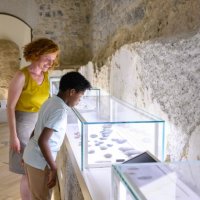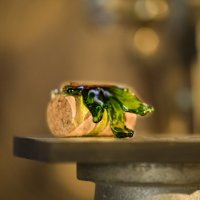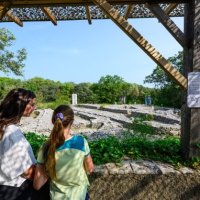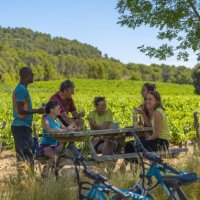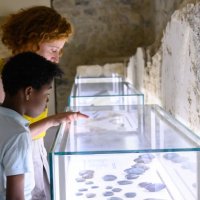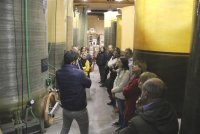Vineyards and landscapes
The destination cares for its landscapes and adheres to the International Network of Wine Landscapes.
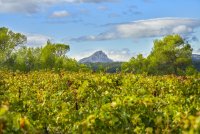
Three itineraries, three landscape readings become the common thread of your excursion: "The vine in its case, the vine to contemplate, the vine at hand".
Ready for beautiful photos. our wines are our landscapes. They can also be enjoyed in moderation in the cellars and cellars that punctuate the itineraries.
From Saint-Mathieu-de-Triviers to Notre-Dame-de-London
It’s time to follow this itinerary «the vine in its case», labeled by the «International Network of Wine Landscapes», and gradually discover varied landscape sequences and the south face of the Pic Saint-Loup. We arrived at the Fambetou pass...
Beautiful panorama of the Pic Saint-Loup and the cliffs of Hortus. The vines, notice, accompany the Pic Saint-Loup to the Col de Fambetou and become wild in the plain of London. Return to Saint-Mathieu-de-Triviers.
From Notre Dame de Londres to Ferrières-les-Verreries
Ha what a charming village! A pretty square, its famous Romanesque church with two naves and its medieval castle... and note, it is also the stronghold of the tambourine ball game.
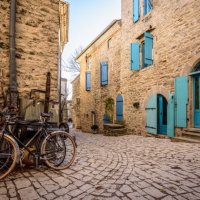
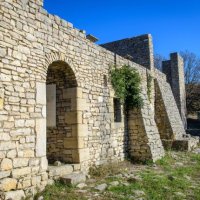
From Ferrières-les-Verreries to La Taillade Ridge
The archaeological glassworks of Couloubrines testifies to the activity of the wood glassworks of the causse, a reflection of an intense activity to which several dynasties of gentlemen glassmakers devote themselves from 1820. The gentlemen glassmakers settled on the Causse de l'Hortus. It is in compensation for the services rendered to the crusades, from which they returned ruined, that these warriors from the nobility obtain from Saint-Louis the monopoly of the manufacture of glass, confirmed by royal act in the fifteenth century. Between 1280 and 1789, about twenty glassworks operated on the Causse de l'Hortus, at different periods.
The glassworks of Seube, Couloubrines, Baumes, Mas Neuf... produce, among others, drinking glasses and molded bottles. The estate of Mas de Baumes is a former farm and glassworks.
Today, it is a restaurant with a few rooms, an address of «end of the world» as we like them. What if we followed the asphodel trail, a small family walk, to discover the natural and historical environment of the Causse?
From Taillade Ridge to Claret
Here the vines take the name given by the International Network of Wine Landscapes of “vines to contemplate” and it is indeed contemplation. The panoramic views from the Causse de l'Hortus on the amphitheatre of Claret and the Combe de Lauret, streaked with vineyards are available to you. The road is beautiful, it winds between the pine forests. Be careful, you may see the sea on the horizon.
Claret to Lauret
On the way to the glassmakers, it’s time to visit the Halle du Verre. A showcase of light for a thousand-year-old art a thousand-year-old art! And yes, here north of Montpellier, on the Causse de l'Hortus, glass making has its history. To follow with friends, family. Here advanced technologies rub shoulders with ancestral activities such as viticulture and glass. You will discover the history of glass, its techniques from antiquity to today.
It also houses a temporary exhibition, the glass workshop with demonstrations and a craft shop. When they settled on the Hortus in 1280, they blew the glass with wood, lime, quartz pebbles collected in the Hérault. Grouped in syndic, these gentlemen went to Sommières by the Chemin des Verriers. In the old village a discovery trail takes you from the church classified Saint Félix to an orientation table to locate the different vineyards.
From Lauret to Valflaunès
A village in the middle of vineyards. It’s time to perfect your wine culture and satisfy your curious mind. The Rocher du Causse on the Hortus plateau and the cellars of the plain give you the opportunity to go on foot, to visit a site of the Copper Age or to taste and admire the cellars where the wines of Pic Saint-Loup are aged, accessible all year round.
From Lauret, climb the Causse de l'Hortus, making a gourmet lunch stop at the Auberge du Cèdre. From the Causse, the view of the vineyards and cliffs of the edge of the plateau.
From Valflaunès to Notre-Dame-d'Aleyrac
The village is built on a hill framed by the cliffs of Pic Saint-Loup and Hortus, overlooking the vineyard. Already 3000 years ago the Neanderthal hunters had settled there. The first mention of the name "Val figulina", meant valley of potters. At the time, according to a study dating from 1743, the wine produced was quite good. Since then, the vineyard has been classified as a controlled designation of origin.

From Notre-Dame-d'Aleyrac to Fontanès
Passage near the hamlet of Lascours, isolated, almost lost in the vineyards. People here know it as "the chapel of the vines". The site of the chapel, erected in the 12th century, is a place of serenity, beauty, silence and solitude. It opens its doors once a year, on August 15 and is located on the course of the pleasant wine tour that offers the "Château de Lancyre" neighbor, Lancyre in freedom.
Fontanes
"The vine at your fingertips", another ranking of the International Network of wine landscapes. Walk in step, the vine surrounds us, it is everywhere and forms a case dominated at the bottom by the cliffs of the Hortus and the Pic Saint-Loup opposite. An impression? That of being in a postcard setting.Return to Saint-Mathieu-de-Treviers.

Type: Road
Departure: Saint-Mathieu-de-Tèviers
Length: 65 km
Duration: 2h
48 resultsSort

To find out more

